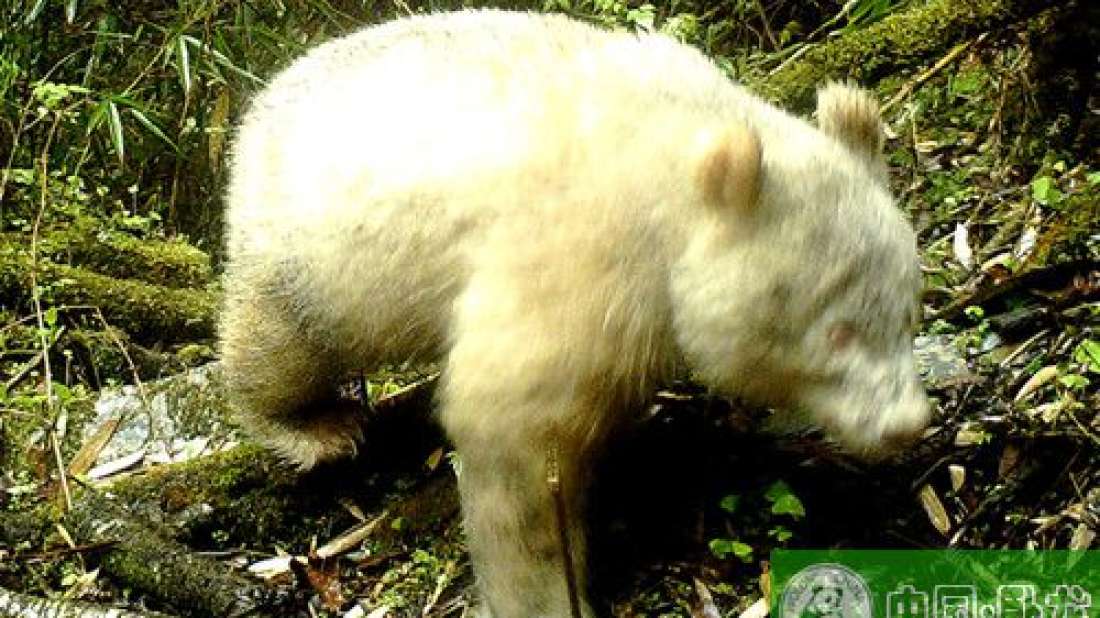A rare albino giant panda has captured the attention of bear
enthusiasts around the world after being documented mid-April in southwest
China.
Spotted at an altitude of 2,000 meters (6,500 feet) by an
infrared camera trap in China’s Wolong National Nature Reserve, the giant
animal has both white hair and claws with red eyes - all indications that it
has a rare genetic mutation responsible for its unique coloring.
"Judging from pictures, the panda is an albino, one to
two years old," Li Sheng, a researcher with Peking University and a
specialist in bears, told Chinese publication Xinhua. "The panda looked
strong and its steps were steady, a sign that the genetic mutation may not have
quite impeded its life.”
Albinism occurs when an animal lacks melanin, the dark brown
or black pigment occurring in hair, skin, and the eyes of people and animals. A
lack of this protective pigment can make an animal more sensitive to sunlight,
resulting in potential skin defects and eye damage. However, a press release
issued by the reserve notes that an expert analysis of the photographs suggests
that the mutation “may not affect the normal life of the panda.” These animals
are found high in China’s bamboo forests, often sheltered from the sun by broad
leaves.
Remember the rare all-white panda captured on camera in southwest China's Sichuan?— China Xinhua Sci-Tech (@XHscitech) May 25, 2019
"Judging from pictures, the panda is an albino," says a specialist in bears. For more: https://t.co/QEMKc4pVd1 pic.twitter.com/ciZSppP1g7
It’s impossible to tell the gender of the panda, but the
park adds that its presence indicates there could be a mutant gene present in Wolong’s
giant panda population. It’s unclear whether the recessively inherited gene
will be passed down to future generations. Only when both parent pandas carry
the gene will it be exhibited in their offspring. If this particular bear mated
with a normal panda, the first generation would still retain the adorable
coloring the world has come to know and love. But, if the second generation of
offspring also carries the albino gene and mates with another panda carrying
the mutation, then it may be possible we could see albino pandas in the years
to come.
Wolong National Nature Reserve is one of the largest and
best-known panda reserves in China. Its warm, humid climate grows bountiful
amounts of bamboo, the panda's favorite food. According to the International
Union for Conservation of Nature Red List, giant pandas are listed as
vulnerable with just between 500 and 1,000 known mature individuals. The giant
bears live only in the forests of China and are threatened by climate change,
as well as pollution, human activities, and natural disasters.

Really great work done awesome post.
ReplyDeleteIoT Training in Chennai
IoT certification
German Language Classes in Chennai
Japanese Language Course in Chennai
French Language Classes in Chennai
pearson vue exam centers in chennai
IoT Training in T Nagar
French Classes in anna nagar
spoken english in anna nagar